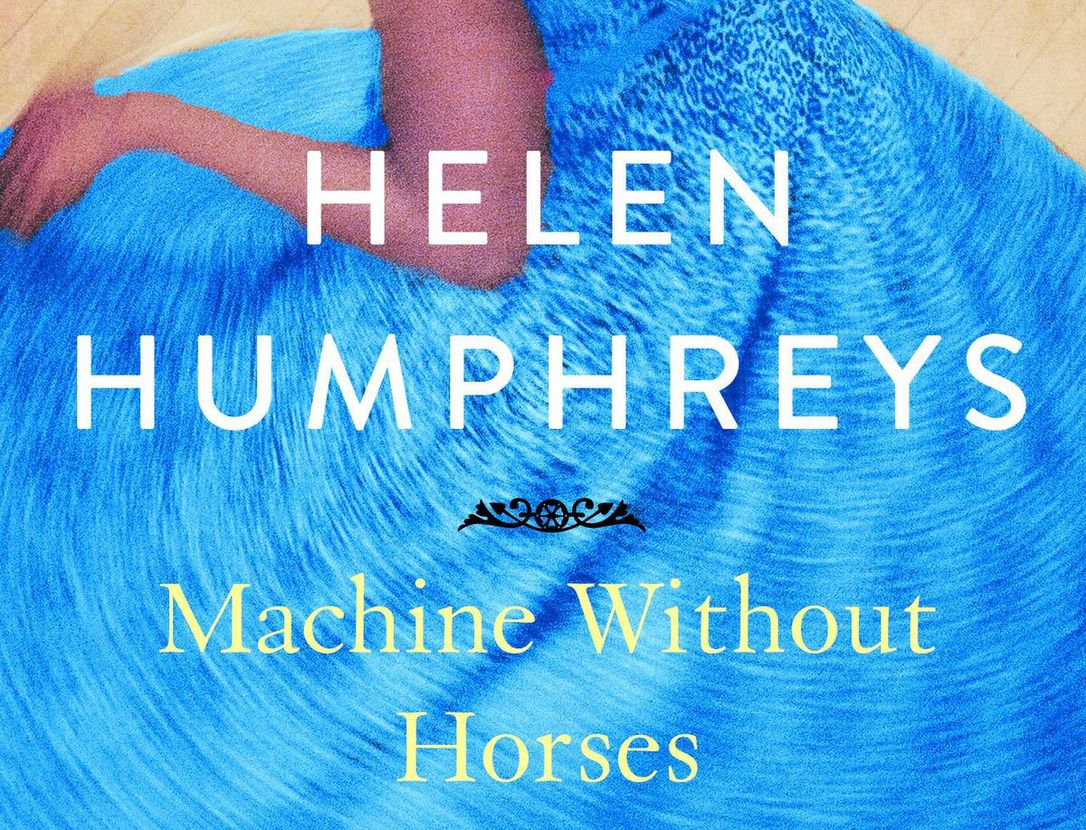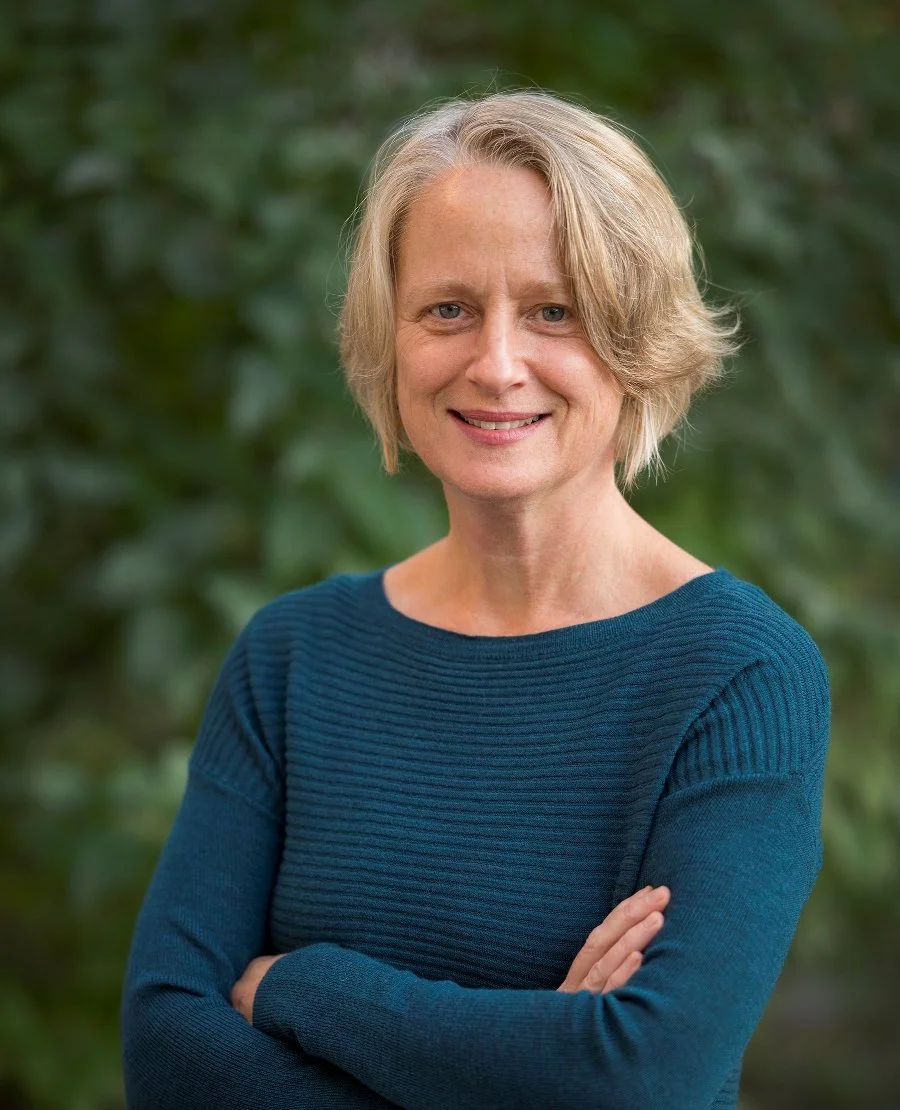Helen Humphreys' Master Class
To date, her critical theories have been subtly woven into the fabric of her stories. But in her latest novel, Helen Humphreys openly offers readers a master class in the art of fiction. Machine Without Horses is based on the life of Megan Boyd, a Scottish woman who became world renown for her exquisite fishing flies. In Part One an author resembling Humphreys comes upon Boyd’s obituary. We observe as she researches Boyd’s life and work and imagines ways of transforming the meagre biographical facts into a fleshed out novel.
Part Two presents the enchanting tale that emerges from Humphreys’ creative process. It is the story of Ruth Thomas who grows up on the shores of The River Brora, and who dedicates her life to crafting gorgeous fishing flies. Ruth’s work is in high demand, winning the admiration of members of the royal family and yet over the years she still finds time to contribute to the war effort, cultivate lifelong friendships, develop a passion for dancing- her favourite dance is one called Machine Without Horses- and fall in love. I interviewed Helen Humphreys about her new novel at the Runnymede Branch of the Toronto Public Library in September. Below, we continue our discussion.
DBN: What was it about Megan Boyd that attracted you?
Megan Boyd at work
HH: I thought she lived an honest life, and I was attracted to that – a simple, honest life. I also welcomed the chance to explore a character who did the same thing for their entire life, and to look at what that relationship to work would be like, how it would change or not change over time.
DBN: I saw Megan as an artist living an artist’s life. Did you see her that way?
HH: Yes, very much. Although, I suppose what she did was more of a craft than an art, in that creativity wasn’t the main component of her work, but a laboured, mechanical perfectionism. She tied the same flies each time – no room for individual flourishes in what she did – but the tying of them was so carefully and beautifully done. In that way she was like an artist, in her approach.
DBN: Can you talk about the dance Machine Without Horses? Why did you choose it for the title of the book?
HH: I thought that the dance did double duty in the book. It was a good symbol for the section about Ruth and her life, a symbol of happiness and activity for her section of the book. And I liked the phrase, “machine without horses” and thought that it was a good way to describe what a novel is, and therefore related well to the first half of the book.
DBN: Tell me about the research you did for the book.
HH: I took fly-tying lessons and learned a lot about individual salmon flies. I found out all the available facts that I could glean about the actual life of Megan Boyd. I looked at a lot of visual material – photos of Boyd’s salmon flies and of her home, and of the salmon rivers in Scotland. I talked to people who fished for salmon, and I watched the salmon run in the Humber River in Toronto, and the Napanee River.
DBN: You have a way of reminding us that many ordinary women lead fascinating lives. Is this something you set out to emphasize in your work?
HH: Yes, I like to look at women’s lives, and in particular at the work they did historically. Much can be discovered about life from work and women’s work – work outside the home, that is – was often linked to a woman’s independence and sense of self, both things that I like to explore and write about.
DBN: Machine Without Horses is divided into two parts. The first in which you describe your creative process and the second, which is the novel that emerges from that process. What made you choose this approach?
HH: I wanted to show the process of writing, to demystify it and explain all the choices that go into making up a story – in this case, a story about someone who actually lived, who was real. At this age and stage of my career, with eight novels under my belt, I want to pass along what I know. So, I wanted this novel to be a sort of primer for writing a novel, but to also tell a compelling story in its own right.
DBN: In what way would you describe yourself as an experimental novelist?
HH: I think that I push the boundaries between fiction and non-fiction, that I blur the genres and that I am constantly looking for new ways to do this, and in this way I think I am experimental.
DBN: Even though we are given the facts of Megan’s life and even though we have some sense of how the story will come together, the novel which emerges still feels like a miracle to me. There is some magic involved. Can you comment on that?
HH: Well, this is the “machine without horses,” the magic of telling a story and how, after you have set the pieces in motion, they carry on moving by themselves. It is what makes fiction work and it can’t really be explained because it is a bit like magic, or perhaps it’s better explained as a kind of energy; that a novel should move with this energy and this is what pulls the reader along, this is what makes story work. But there is no way to put your finger on exactly what this thing is, or what sets it in motion. I like that for all the plotting and planning that goes into making a novel, what ultimately makes it work or fail is something indefinable.
DBN: When I read your novels I feel as though the major themes are love and loss. Do you agree with this? Why or why not?
HH: Yes, I agree with that. They’re two sides of the same coin, aren’t they? Hard to have one without the other.
DBN: How did you develop your literary skill?
HH: Reading, reading, reading. And then a lot of writing to practice character and voice and plot. I wrote a lot of bad, early novels, but they were very helpful as practice. And I apprenticed by reading the work of great literary novelists like Faulkner and Woolf.
DBN: Do you teach creative writing? If you did, what would you tell students to focus on?
HH: I have taught for many years, but am not teaching much going forward. It takes a lot of energy to teach, much the same energy that it takes to write, and I don’t have the inclination to do both anymore. But I would tell my students to particularize where possible. It’s the detail that makes a story individual and original.
DBN: You often say you have to leave the world in order to write a novel? What do you mean by that, exactly? How does it work?
HH: Well, the novel is a world of its own, and to enter it effectively, I feel that I have to leave (insofar as that is possible) the world I actually live in. So, mostly that consists of leading a fairly regular, albeit boring real life so that I have the energy and focus to spend on the world of the novel.
DBN: On the back of the book The River you ask: How can we know anyone or anything? Can you explain the significance of that question in your work?
HH: I am interested in that question as it relates to both people and to place. What is it that allows us to be intimate with someone or somewhere? What is required of us? How do barriers to intimacy get broached? I think that my books are primarily an exploration of that question.
DBN: I don’t know why, but I am afraid to ask why you no longer write poetry. (You don’t have to tell me.)
HH: It’s not that I don’t want to write poetry, I do, but I find that any I do write tends to get absorbed into the larger world of the novel. I write a poem and then end up breaking it down into prose and putting it into whatever novel I’m working on. It’s as though a novel wants to consume all that is around it and poetry has no defence against that hunger. It feels much like that to me.
DBN: The River Thames, The Napanee, The River Brora: Why are you so attracted to rivers?
HH: I love rivers. They are on their way somewhere and you can see the movement, or feel it if you are in or on the river itself. I love that they move and I can be part of that movement, or watch it from the riverbanks. That movement feels like life to me – almost exactly like life – and I am drawn to it and excited by it.
DBN: Did you grow up in an artistic household?
HH: I grew up in a musical household. My parents were both music lovers. My mother played the piano. My father had a huge classical music and opera collection and listened to music every night of his life, for several hours. My brother played the piano from an early age. It wasn’t an especially literary household, but my parents, in their love of music, understood art and artists and that helped me a lot when I decided that I wanted to be a writer.
DBN: Did you love to read as a child? If so, what were your favourite books and why?
HH: I have always loved books. Charlotte’s Web was an early favourite, and before that the Beatrix Potter books. I loved books that featured animals, as I loved animals.
DBN: I know you were born in Britain, but why does it still occupy so much of your imagination?
HH: I grew up hearing the stories of my parents and I became attached to those stories. Many were stories of the war, as both of them had been children during the Second World War, and my father’s father had been killed in that war. I think those stories hooked my imagination and I suppose, in some way, my longing for England was both to do with my having been removed from it at an early age, and was tired up in my parent’s memories of their childhood.
DBN: I feel as though you are an extremely romantic writer? Do you agree?
HH: Yes, I think I have a very romantic sensibility as a writer. For good or bad. I can never decide if it’s a benefit to my writing or not.
DBN: I also relish in the atmosphere of nostalgia. Not for the Good Ole days but for something very private and individual. What are you nostalgic for?
HH: I think I’m nostalgic for the days before everything was a commodity with a value attached. There was a time, when I was a young writer, when art was talked about and the word “market” was never mentioned. Art for art’s sake was something I remember, and although I think art can still be pure of motive, it is never now not complicated by commerce, and I regret that.
DBN: Thank you, Helen.
HH: My pleasure.
This interview took place in 2018.







